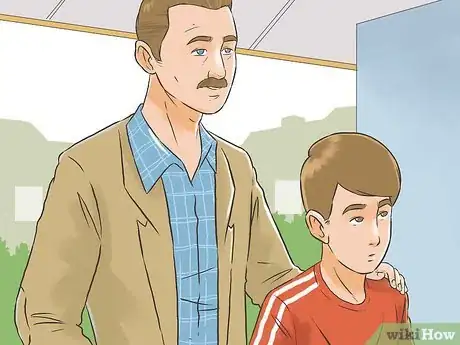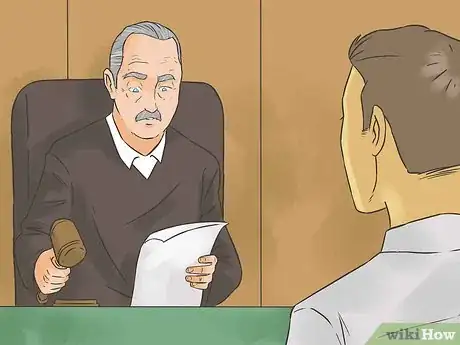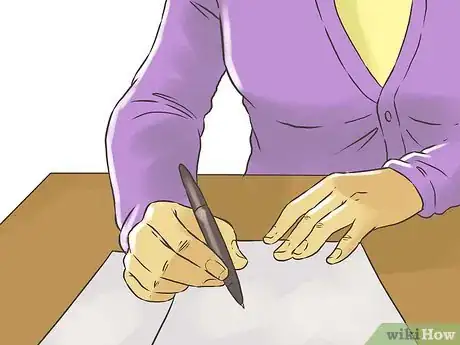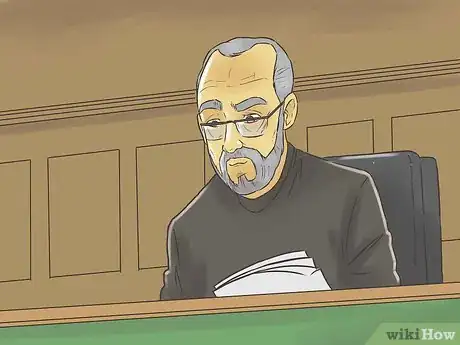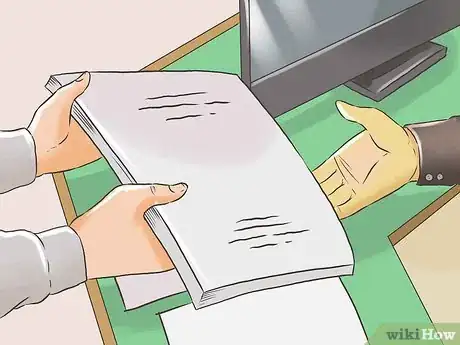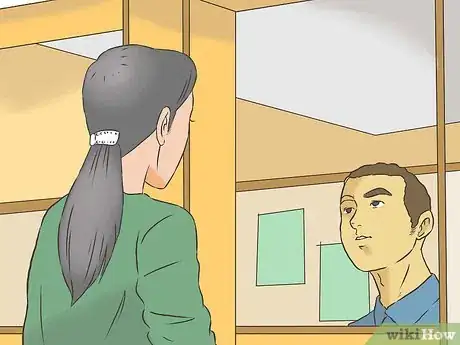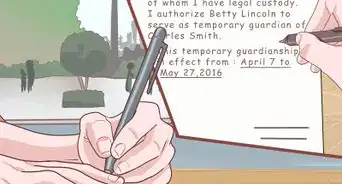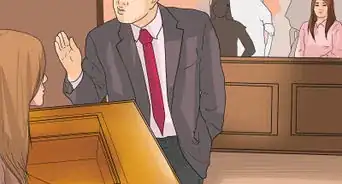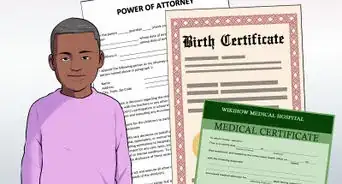This article was co-authored by Clinton M. Sandvick, JD, PhD. Clinton M. Sandvick worked as a civil litigator in California for over 7 years. He received his JD from the University of Wisconsin-Madison in 1998 and his PhD in American History from the University of Oregon in 2013.
There are 12 references cited in this article, which can be found at the bottom of the page.
This article has been viewed 48,298 times.
A legal guardian, also called a conservator in some states, is someone with the legal authority to care and make decisions for a minor child or incapacitated adult.[1] Applying to become a legal guardian over someone else involves filling out a number of forms and going through one or more court proceedings.[2] It is extremely important you take all of the proper steps to become a legal guardian in order to ensure that you do not have trouble in the future.
Steps
Deciding to Become a Guardian
-
1Decide whether becoming a legal guardian is right for your situation. Guardians are court-supervised caretakers for minors and incapacitated persons. Guardians are responsible for the wellbeing of their wards (the person for whom they are the guardian), and may also be responsible for handling the person's assets and finances. The guardian must periodically report to the court on the ward's status. Make sure that you are prepared to accept the responsibility of acting as a legal guardian.
- In some states, guardianships are called conservatorships. In California, for example, guardianships are for children, and conservatorships are for incapacitated adults.[3] [4]
- Consider alternatives to becoming a legal guardian.[5] Think about other avenues to protect the child's or adult's well-being before starting the process to become someone's legal guardian. Some alternatives you might look into include a power of attorney, living will, health care proxy, and/or a representative payee arrangement.[6] You may also be able to file for a temporary guardianship, which is a faster process for emergency cases, and ends when the court appoints a permanent guardian.[7]
-
2Verify that your prospective ward is eligible for a guardianship. The eligibility standards for guardianships differ between children and adults. A child can have a non-parent guardian as long as the child is under 18 years of age and has not been emancipated by a court order. An adult is not eligible for a guardianship unless the court finds evidence that the adult is legally incapacitated, either by age or disability. Incapacity must be proven by clear and convincing evidence that the person cannot provide his or her own food, clothing, or shelter, manage physical health or financial affairs. Procedures differ by state, but courts will require a statement from a doctor, and will appoint an attorney to investigate and represent the interests of the proposed ward.
- Having someone declared legally incapacitated can be a challenging process. The process can be further complicated if the ward has substantial property or assets to manage, or if the ward is a Native American (which may raise issues of federal law). Consider hiring an attorney to handle your case. You can get referrals from friends and family, or from attorneys who may not handle guardianships but know a trusted colleague who does. You can also use referral services through your state and local bar associations, or just search online.
- Some courts with particularly complicated guardianship processes may not hear guardianship applications filed by non-lawyers. Verify your court's rules before you begin.
Advertisement -
3Verify that you are eligible to become a guardian. To become a guardian, you must demonstrate to the court that your are capable of accepting the responsibility of a guardianship. You do not need to be a relative of the ward.[8] You may be found to be ineligible if you are have a history of bad conduct (especially a felony conviction), conflicts of interest with the ward, inexperience, lack of education, or are a minor or incapacitated person yourself. Furthermore, if two or more eligible people both wish to become the guardian, the court will have to choose one over the other.
- In Texas, for example, if more than one person seeks a guardianship, the court will consider whether the proposed ward designated someone to serve as guardian prior to his or her incapacity. The court will then give priority in to proposed guardians in the following order: anyone designated by the last surviving parent of the ward, the ward's spouse, the ward's next of kin, and then non-relatives.
-
4Differentiate between guardianship of the person versus guardianship of the estate. Your state may require you to submit different forms depending on whether you wish to become the guardian of the person or the estate, or both. Guardianship of the person means that you are responsible for the well being of the ward, from personal care and maintenance to medical decisions.[9] If the ward is a child, you will be responsible for their living conditions, schooling, medical needs, and any harm the ward causes.[10] Guardianship of the estate means that you are tasked with managing, investing, protecting, and disposing of the ward's assets and property in accordance with the law and the ward's best interests.[11]
Filing Your Forms
-
1Fill out the necessary forms and documents. If becoming someone's legal guardian is the right choice for you, you should start the process by obtaining and filling out the required forms.[12] You can usually find all the required forms online by going to your state's judicial branch website.[13] If you cannot find the required documents online, go to the courthouse and ask a clerk for the necessary forms.[14] Some of the forms you will need to fill out include:
- A petition for the appointment of a guardian.[15] This document asks for general information , including your name, address, and the proposed ward's name.[16] It will also ask you to explain why the ward needs a guardian and what powers you should be granted over the ward.[17]
- A notice of hearing.[18] This is the document you will give to all interested parties, such as parents and other relatives, and your county's and state's social services departments.[19] The notice states what the petition is about and when the hearing will take place.[20]
- A duties of the guardian form.[21] This document lays out all of the duties you will be required to fulfill as a guardian.[22] You must sign this document and file it with the rest of your forms.[23]
-
2File all the required documentation with the clerk of courts. Once you have filled out all the required documents, you will take them to your courthouse and file them with the clerk of courts.[24] You will have to pay a fee for filing unless you obtain a fee waiver because you are unable to pay.[25]
-
3Give notice of the hearing to all interested parties. After filing your petition, you will have to give notice to interested parties, including relatives of the ward and state and county agencies.[26] In order to give the interested parties proper notice, you must follow the directions laid out by the laws of your state, so be sure to carefully review those requirements.[27]
Attending the Hearing
-
1Attend the court hearing. After you file your forms, the clerk will inform you of your hearing date. Be sure you bring all of your documents with you to the hearing, including proofs of service verifying that you gave notice to all interested parties.[28] Be prepared to:
- Present evidence that the person needs a guardian.[29] [30] You should develop a short story telling the judge why the allegedly incapacitated person is in need of a guardian.[31] Describe the person's daily routine, what services the person uses or needs, and why he or she is no longer able to manage personal needs and/or property.[32]
- Answer questions from the judge about why you should be the guardian.[33] [34] Explain what you are going to do to care for the ward, explain the support system you have in place to help you provide that care, and explain how you are financially stable enough to provide care for another person.
- Offer witness testimony regarding your ability to be a guardian.[35] [36] Consider calling on family members, neighbors, and people who currently care for the person.[37] Ask them to attend the hearing with you and speak on your behalf.
- Listen and respond to any objections to your petition.[38] [39] Other interested parties may attend the hearing, and may challenge your request to be a guardian. Try to anticipate those challenges as best you can.
-
2Get an order from the judge. After your hearing, your judge will make a decision as to whether you will be named the guardian over the person. For guardianships of children, if the child's parents agree with the guardianship, the judge will typically allow it if it is appropriate or necessary.[40] If one or both of the parents object, the judge will grant your guardianship only if staying with the parent(s) will be detrimental to the child and the guardianship will be in the best interest of the child.[41]
- If the court denies your petition, you may be able to try again or file an appeal. Check your state's rules of appellate procedure for time-frames and rules for filing an appeal.[42]
-
3File your court order with the clerk of courts. If your judge allows you to be the guardian of the ward, you will be given a court order. File that order with the clerk of courts.[43]
-
4Report the status of your guardianship to the court as required. The court will schedule review hearings, at which you will be required to update the court on the status of your ward. You can also raise any new issues that arise with the judge, and request additional authority.
- You may be required to attend training or evaluation programs designed for guardians. If you are instructed to do so, be prepared to report your status in those programs to the court.
Warnings
- This article is intended as legal information and does not provide legal advice. If you need legal advice, contact a licensed attorney.⧼thumbs_response⧽
- Give the concept of legal guardianship much thought before filing a petition. When you become a legal guardian, you assume complete responsibility for the person. You do not become the parent, but you do take on parental duties.⧼thumbs_response⧽
- Your duty as a legal guardian of a minor ceases, under normal circumstances, when the child turns 18.⧼thumbs_response⧽
References
- ↑ http://definitions.uslegal.com/g/guardianship/
- ↑ http://www.courts.ca.gov/1212.htm
- ↑ http://www.courts.ca.gov/1212.htm
- ↑ http://www.courts.ca.gov/selfhelp-conservatorship.htm
- ↑ http://www.courts.ca.gov/documents/gc205.pdf
- ↑ http://www.law.cuny.edu/academics/clinics/elder/Becoming-A-Guardian-Without-A-Lawyer.pdf
- ↑ http://www.courts.ca.gov/1212.htm
- ↑ http://www.law.cuny.edu/academics/clinics/elder/Becoming-A-Guardian-Without-A-Lawyer.pdf
- ↑ http://www.parentgiving.com/elder-care/guardianship-versus-conservatorship-what-is-the-difference/
- ↑ http://www.courts.ca.gov/1211.htm
- ↑ http://www.parentgiving.com/elder-care/guardianship-versus-conservatorship-what-is-the-difference/
- ↑ http://www.courts.ca.gov/1212.htm
- ↑ http://www.courts.ca.gov/1212.htm
- ↑ http://www.courts.ca.gov/1212.htm
- ↑ http://www.courts.ca.gov/1212.htm
- ↑ http://www.courts.ca.gov/documents/gc210p.pdf
- ↑ http://www.courts.ca.gov/documents/gc210p.pdf
- ↑ http://www.courts.ca.gov/1212.htm
- ↑ http://www.courts.ca.gov/1212.htm
- ↑ http://www.courts.ca.gov/documents/gc020.pdf
- ↑ http://www.courts.ca.gov/1212.htm
- ↑ http://www.courts.ca.gov/documents/gc248.pdf
- ↑ http://www.courts.ca.gov/documents/gc248.pdf
- ↑ http://www.courts.ca.gov/1212.htm
- ↑ http://www.courts.ca.gov/1212.htm
- ↑ http://www.courts.ca.gov/1212.htm
- ↑ http://www.courts.ca.gov/1212.htm
- ↑ http://www.courts.ca.gov/1212.htm
- ↑ http://www.courts.ca.gov/1212.htm
- ↑ http://www.law.cuny.edu/academics/clinics/elder/Becoming-A-Guardian-Without-A-Lawyer.pdf
- ↑ http://www.law.cuny.edu/academics/clinics/elder/Becoming-A-Guardian-Without-A-Lawyer.pdf
- ↑ http://www.law.cuny.edu/academics/clinics/elder/Becoming-A-Guardian-Without-A-Lawyer.pdf
- ↑ http://www.courts.ca.gov/1212.htm
- ↑ http://www.law.cuny.edu/academics/clinics/elder/Becoming-A-Guardian-Without-A-Lawyer.pdf
- ↑ http://www.courts.ca.gov/1212.htm
- ↑ http://www.law.cuny.edu/academics/clinics/elder/Becoming-A-Guardian-Without-A-Lawyer.pdf
- ↑ http://www.law.cuny.edu/academics/clinics/elder/Becoming-A-Guardian-Without-A-Lawyer.pdf
- ↑ http://www.courts.ca.gov/1212.htm
- ↑ http://www.law.cuny.edu/academics/clinics/elder/Becoming-A-Guardian-Without-A-Lawyer.pdf
- ↑ http://www.courts.ca.gov/1212.htm
- ↑ http://www.courts.ca.gov/1212.htm
- ↑ http://litigation.findlaw.com/filing-a-lawsuit/appealing-a-court-decision-or-judgment.html
- ↑ http://www.courts.ca.gov/1212.htm
